In 2008, there were over 1 million feral camels spread out over much of Australia’s desert interior, apparently with a population set to double every 8-9 years. Camels are obviously not native to Australia but are thriving in the deserts. Due to the camels using up scarce water resources, competing with sheep and cattle for food and taking a toll on native ecosystems, the Australian government started a massive cull program (amidst some…interesting backlash) and now the population is down to around 300,000. Still, they are considered a pest and many are exported to the Middle East for racing, meat etc.
How did such a large population of camels end up in outback Australia?
This is a chapter in Australian history not too well known internationally. Because Australia’s desert interior was difficult for British settlers to explore, they enlisted the help of significant numbers of migrant worker cameleers. They were called “Afghans” but came from many places in the Middle East and Central/South Asia, bringing with them dromedary and Bactrian camels and the know-how of camel exploration.
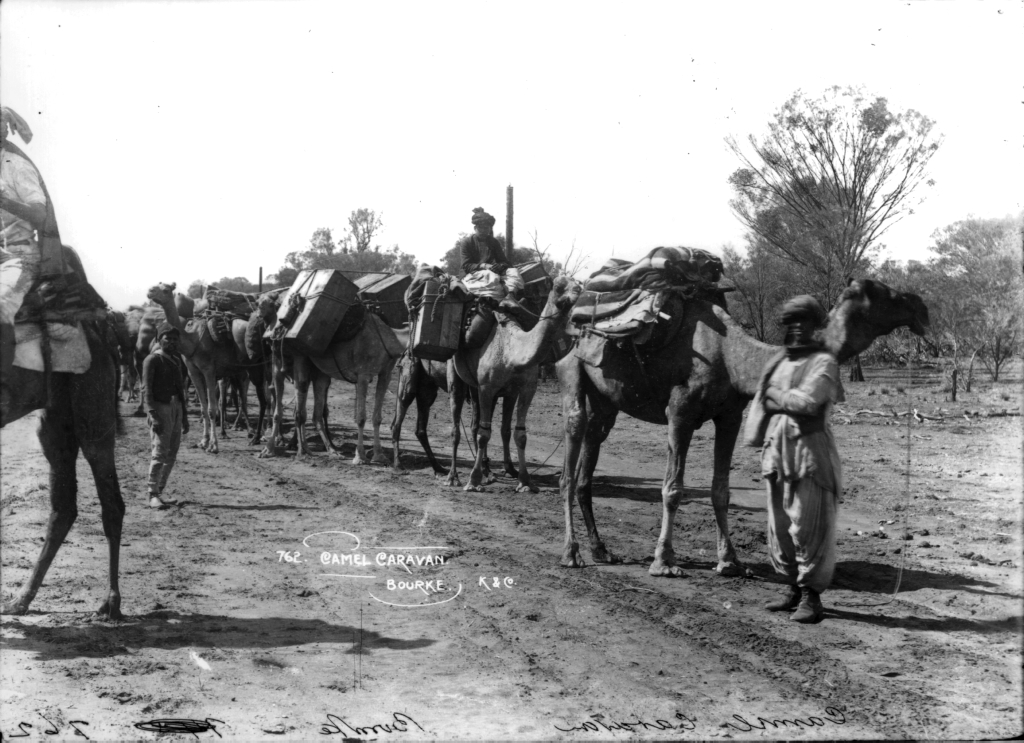
The camel expeditions helped lead Europeans into Australia’s interior for the first time. By the 1860s, camels were a major part of the Australian economy. They were also a crucial factor in Britain’s colonial grip on the continent and the subjugation of indigenous Australians. The flip side of the arrangement was that the cameleers themselves faced considerable prejudice due to being Muslim people of colour, many of whom came from the country that had fiercely fought back against the British.
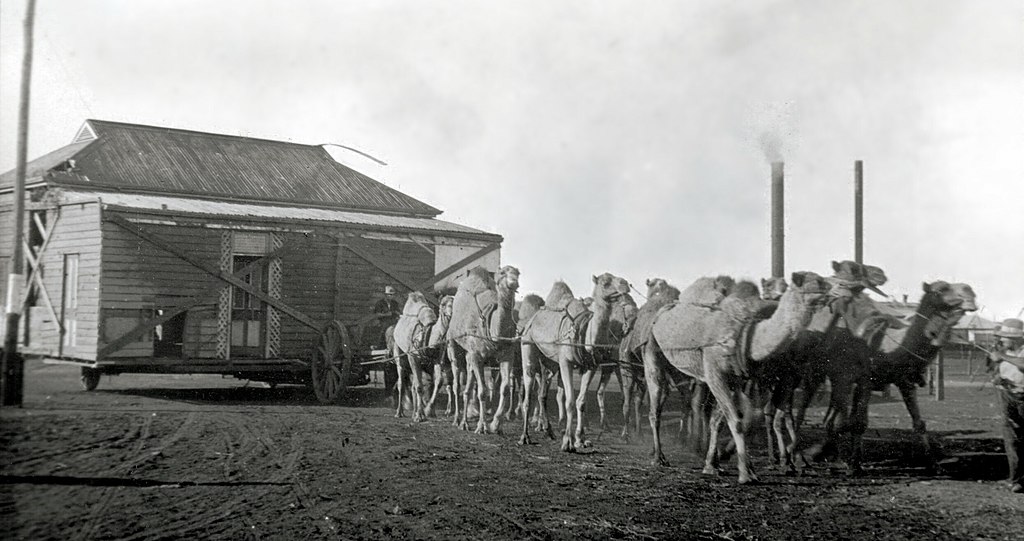
One of the first acts passed by the Australian Parliament after federation was the Immigration Restriction Act, 1901 which formed the basis of the White Australia policy. This meant that cameleers whose contracts expired could no longer get back into Australia to continue working. Cameleers either went “back to where they came from” or tried to stay working in other professions – since cars, the railway and the telegraph made their services less needed. Many released their animals out of frustration, or not wanting to see them killed.

So, what do we have in the end? We have “foreigners” coming to Australia, both human foreigners and animal foreigners. They’re coming in to do what white Australian society felt was good and important work (of course we should have other thoughts now). And when that work is done, the people get booted as a form of thanks; but the animals can stay.
This is of course neither surprising nor paradoxical. The animals pose no threat to the country’s perceived racial purity. Getting to know an animal species you’ve never interacted with before is mind expanding, but it’s not likely to lead to the kind of uncomfortable questions about humanity and identity. Nor was this state of affairs somehow an exception. I would say that given Australia’s treatment of “foreigners” who have wanted to come here (especially our treatment of asylum seekers over the last 20 years), the story of the cameleers is precedent.
You might think that, bigoted as Australia’s policies were, they were probably not conscious in giving preference to the camels over the humans. You’re probably right, but it does happen in even more explicit terms. For example, there were hundreds of Iraqis who worked as translators for the USA during the most recent Iraq wars (and whose lives are therefore now in danger). The USA’s “thanks” was to create a program that promised resettlement in the US but instead dumped a whole lot of bureaucratic tape on them. Meanwhile a local donkey who was beloved by a particular unit and became their mascot got resettled in the US, because of course there are no passport name complications with donkeys. If you feel like getting angry, you can watch a whole segment of John Olver about the disparity between donkeys and people:
Now, I don’t think it’s remotely true that animals get treated better than people. It’s a silly comparison anyway, because it conflates thousands of issues together. But I think it would have been nicer if it was the cameleers who got to stay en masse and it was the camels whose visas were not renewed. With a large Middle Eastern and Central Asian community living in Australia for the last 120 years, who knows how world history, or even the local issue of our appalling treatment of asylum seekers might have been different?
For more information on Australia’s cameleers, go here, here or here

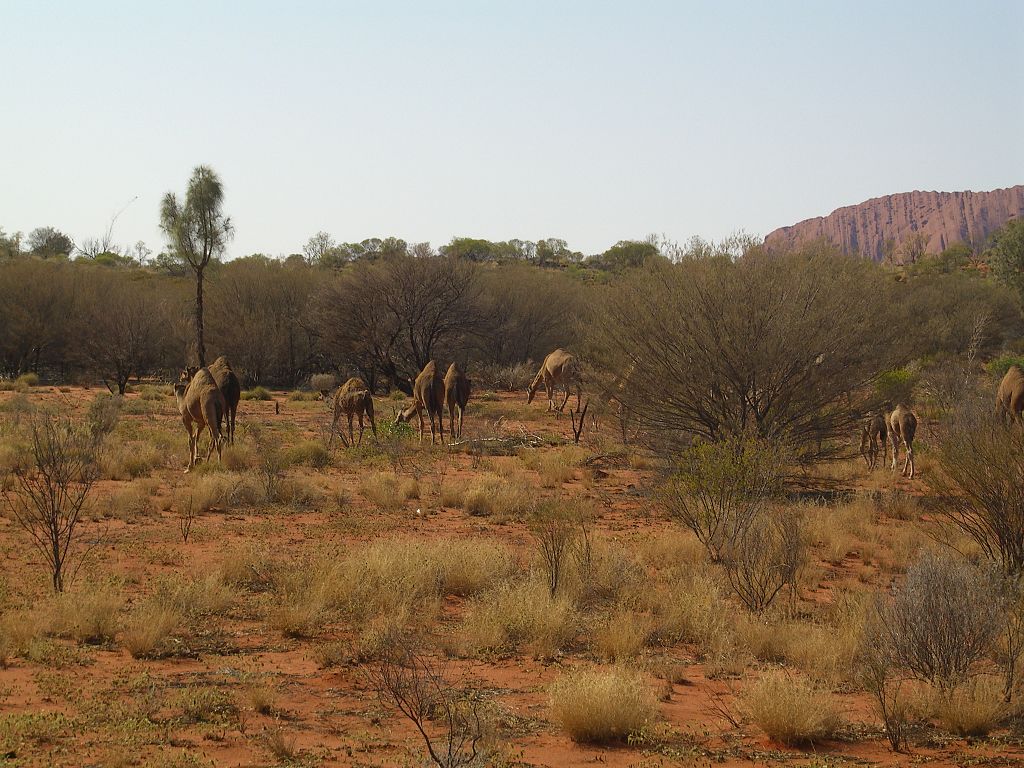

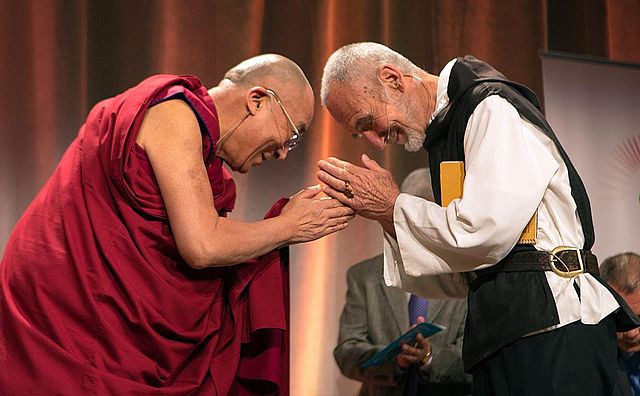
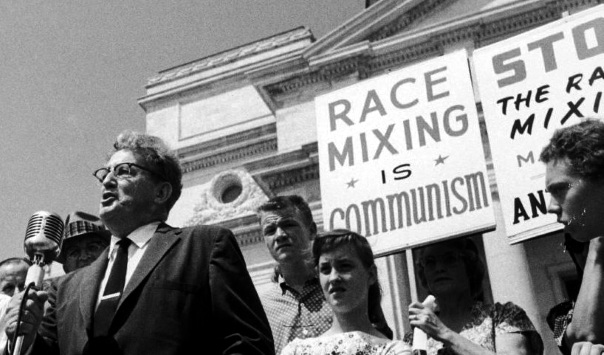
0 Comments